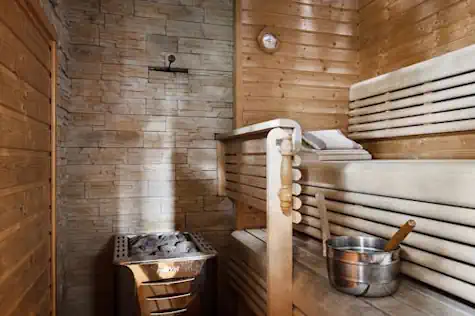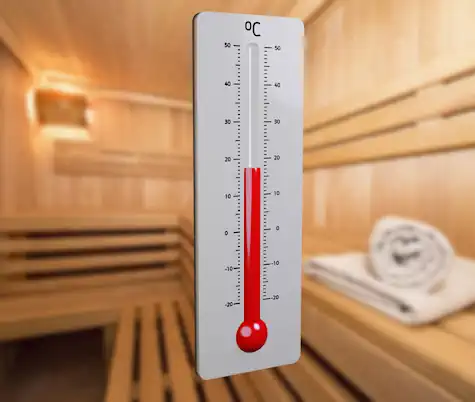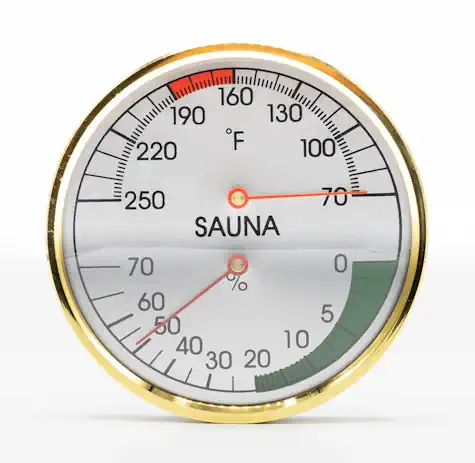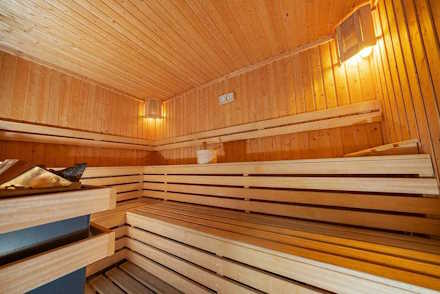The Ultimate Sauna Temperature Guide: Finding Your Ideal Heat

Hello, fellow health enthusiasts and sauna aficionados! There’s something uniquely rejuvenating about stepping into the warm, dry heat enveloping heat of a sauna. Whether you’re a seasoned spa-goer, a proud sauna owner, or in the market for one, understanding the ins and outs of sauna temperature can significantly enhance your experience.
Introduction to Saunas and Their Health Benefits
Saunas have been a staple of wellness for centuries, offering a quiet refuge where one can relax and detoxify. The incredible health benefits of regular sauna sessions are too good to ignore, and I’m excited to share some of these with you. Here’s what stepping into dry saunas and that warm, comforting space can do for you:
Improved Circulation: The heat from the sauna helps increase blood flow and lessen issues from cardiovascular disease, similar to the effects of mild exercise.
Pain Relief: Regular use can reduce pain and ease the discomfort associated with conditions like arthritis by relaxing muscles and improving circulation.
Enhanced Sleep: The relaxation benefits of sauna use can help ease you into a deeper, more restful sleep.
Detoxification: Sweating it out in a sauna can help flush toxins from your body, promoting a healthy detox.
Stress Reduction: It provides a peaceful sanctuary to destress and unwind, significantly reducing your overall stress levels.
Improved Skin Health: The sweating process helps cleanse the skin, potentially improving complexion and skin health.
Boosted Immune System: Regular sauna sessions can enhance your immune system by increasing the production of white blood cells.
High Blood Pressure Management: Engaging in regular sauna sessions has been shown to help lower high blood pressure over time. The warmth from the sauna can cause blood vessels to expand, improving circulation and reducing the pressure on the heart.
But to reap these benefits fully, knowing the right sauna temperature is key. Remember, while the sauna health benefits are plenty, it’s essential to listen to your body and stay hydrated during and after your sauna sessions.
Exploring the Optimal Sauna Temperature for Different Purposes

The “perfect” sauna temperature might not be the same for everyone—it’s more about what you’re hoping to achieve. Generally, saunas can range from 150° to 195° degrees Fahrenheit (65° to 90° degrees Celcius). If you’re looking for deep relaxation and muscle recovery, staying within the lower end of this spectrum might be best. For those seeking intense detoxification, temperatures closer to the upper limit will make you sweat profusely, flushing out toxins more effectively.
To help you find that sweet spot of warmth that caters to your wellness goals, here’s a breakdown of the best sauna temperature ranges and the associated health benefits for each:
150°F to 160°F (65°C to 71°C): The Gentle Warmth
Ideal for beginners or those sensitive to high heat.
Promotes light sweating, aiding in gentle detoxification.
Encourages relaxation without overwhelming the body, perfect for easing into the sauna experience.
161°F to 175°F (72°C to 79°C): The Therapeutic Range
Balances relaxation with moderate sweating, beneficial for detoxifying.
Enhances circulation more significantly, aiding in pain relief and muscle relaxation.
Suitable for most regular users seeking balanced health benefits.
176°F to 185°F (80°C to 85°C): The Intense Heat Zone
Maximizes detoxification through profuse sweating.
Optimal for experienced sauna users looking for an intense session.
Boosts immune response and white blood cell production due to the higher heat stress.
186°F to 195°F (86°C to 90°C): The Upper Limits
Recommended for short, intense sessions and seasoned sauna enthusiasts.
Drastically increases circulation and sweating, offering peak detoxification.
Amplifies the benefits of stress reduction and muscle relaxation, but should be approached with caution to avoid overheating.
Each temperature range has its charm and set of benefits, and it’s wonderful how you can tailor your sauna sessions to suit your body’s needs and wellness objectives. Remember, the key is to stay comfortable, hydrated, and to listen to your body’s cues.
Factors Influencing Sauna Temperature
Several factors can affect how you perceive heat in a sauna or steam room, including humidity level, the size of the sauna, and even your position within it. Traditional Finnish saunas, with lower humidity, allow for higher temperatures, while Turkish-style steam rooms are lower in temperature but feel just as intense due to the high humidity.

When trying to find your ideal sauna temperature, it’s good to consider how various factors might change your experience. Here’s a little list of things that can influence how hot or cozy you feel inside:
Humidity Levels: Higher humidity makes the air feel hotter, even at lower temperatures. In contrast, a dry sauna might allow for a higher temperature setting without discomfort.
Size of the Sauna: Smaller saunas tend to heat up more quickly and can feel hotter than larger ones, where heat distribution might be more even.
Material and Construction: The type of wood and insulation used in constructing the sauna can affect how the sauna retains and distributes heat.
Number of People: A crowded sauna will feel warmer than one with just a few people because of the additional body heat and moisture.
Duration of Use: The longer the sauna is in use, the more consistent the temperature will become throughout the room.
Position Inside the Sauna: Heat rises, so sitting higher up will expose you to more heat, while lower benches offer a cooler experience.
Ventilation: Proper ventilation helps regulate the sauna’s temperature and maintains air quality, impacting how the heat feels.
Understanding these factors can help you fine-tune your sauna sessions to perfection, making each visit a perfectly warm, delightful escape tailored just for you. Remember, everyone’s body temperature and comfort level is different, so what works for one person may not work for another.
Choosing the Right Sauna Heating Methods for You
Selecting the ideal heating method for your sauna extends beyond mere temperature control; it’s about enhancing your overall sauna experience. Each method offers a distinct sensation and set of benefits, making your choice a personal preference based on what you value most in your wellness routine.
Electric Heaters: These are the most common in modern saunas, known for their convenience and precise temperature control. Electric heaters are a perfect heat source for those seeking a straightforward, efficient sauna experience without the need for additional maintenance.
Wood-Burning Stoves: For a more traditional sauna, wood-burning stoves provide a gentle, radiant heat complemented by the soothing scent of burning wood. Ideal for those who appreciate the ritual of lighting and tending to a fire, this method adds a rustic charm to the sauna experience.
Infrared Panels: Offering a different approach, infrared saunas use panels to emit infrared light that directly warms your body, enabling a thorough heat penetration at lower air temperatures. This method is favored by those focusing on specific health outcomes such as muscle recovery and improved circulation, as it can provide benefits at a more comfortable temperature.
Gas and Oil Heaters: Less common but highly efficient, gas and oil heaters can heat a sauna quickly and are suitable for larger installations. This option might appeal to those who have access to natural gas or oil and are looking for a powerful heating solution.
Choosing the right heating method depends on your personal preferences, the desired health benefits, and practical considerations such as space and availability of resources. Whichever method you opt for, ensure it aligns with your vision of the perfect sauna retreat, promising you those blissful moments of warmth and relaxation.
Safety Precautions and Best Practices
Sauna Safely should always be your top priority. Never stay in a sauna for too long—15 to 20 minutes is ample for most people—and always listen to your own core body temperature. If you feel dizzy, nauseous, or uncomfortable in any way, it’s time to step out. Ensure you’re well-hydrated before going in, and it might be wise to avoid alcohol before sauna sessions.

Here are some essential safety precautions and best practices to keep in mind for an enjoyable and safe sauna experience:
Stay Hydrated: Drink plenty of water before, during, and after your sauna session to replace lost fluids.
Limit Your Time: Keep sauna sessions to 15-20 minutes at a time, especially if you’re a beginner or if the sauna is particularly hot.
Listen to Your Body: Exit the sauna immediately if you experience dizziness, discomfort, or any signs of overheating.
Cool Down Gradually: After leaving the sauna, allow your body to cool down gradually before taking a cold shower. This helps your body adjust to the temperature change.
Avoid Alcohol and Meals Beforehand: Don’t use the sauna immediately after consuming a large meal or alcohol, as it can increase the risk of dehydration and hypotension.
Use a Towel: Sit on a towel to maintain hygiene and absorb sweat.
Avoid Sauna Use if Unwell: If you’re feeling unwell or have a medical condition, consult a doctor before using a sauna.
Sauna Post-Exercise: If using the sauna after exercise, ensure you’ve cooled down and rehydrated first.
Keep Quiet and Relaxed: Saunas are places for relaxation. Keep conversations low and allow yourself and others to enjoy the peaceful environment.
Check Sauna for Cleanliness: Before entering, make sure the sauna is clean and well-maintained to avoid any health risks.
Respect Others’ Space: Saunas are often communal spaces, so be considerate and respect others’ comfort and space.
Heat Stroke or Heat Exposure: If you have had past issues with heat exposure or heat stroke we highly recommend discussing sauna temperature ranges and usage with your physician before planning a stay in the sauna.
Remember, the goal of sauna use is relaxation and health promotion. By following these guidelines, you can ensure a safe, enjoyable, and healthful experience.
Real-World Tips and Tricks for Sauna Temperature Management
Here are a few personal anecdotes and tips I’ve picked up along my sauna journeys:
Start lower and gradually increase the temperature to find your comfort zone.
Try moving around the sauna; the heat varies at different levels, with it being hotter higher up.
Invest in a reliable thermometer to keep an accurate check on the temperature.
If adding/using steam, add the water slowly and wait for about 5 minutes for the steam to reach full effect.
If you are adjusting the temperature during your sauna session, leave the sauna and rest while the temperature adjusts.
Understand the types of saunas and how temperature will vary from a Finnish sauna to a steam room.
Conclusion: The Perfect Sauna Temperature for You
Finding your perfect temperature might require a bit of experimentation, but it’s worth the effort. The goal is to emerge feeling refreshed, relaxed, and rejuvenated. Remember, the best sauna experience is one that’s tailored to your personal preferences and safety.
Navigating the world of saunas can be as soothing as the experience itself, provided you’re armed with the right knowledge. By understanding and respecting sauna temperatures, you’re ensuring a safe, enjoyable, and health-boosting ritual that you can look forward to time and time again.
Frequently Asked Questions (FAQs)
What is the ideal temperature for traditional saunas?
The ideal sauna temperature varies depending on individual comfort levels, but typically ranges for an average person are between 150°F to 195°F (65°C to 90°C). It’s important to start at lower temperatures if you’re new to sauna use and then start gradually increasing until you find what works best for you.
How long should I stay in a sauna?
Most people find that 15 to 20 minutes in a sauna is sufficient. Listen to your body, and if you feel any discomfort, it’s time to leave. It’s also beneficial to take short breaks if you plan on enjoying hot sauna for multiple sessions.
Can I use a sauna if I’m pregnant?
If you’re pregnant, it’s essential to consult with your healthcare provider before using a sauna. The high temperatures can pose risks during pregnancy, so it’s crucial to get professional advice tailored to your specific situation.
Is it okay to pour water on the sauna rocks?
Yes, adding water to the sauna rocks creates steam, which can make the heat feel more intense. However, do this sparingly and with caution, especially in electric saunas, as not all are designed for wet sauna use.
Can children use a sauna?
Children over the age of 6 can use a sauna, but the temperature should be lower, and sessions should be shorter (around 5 to 10 minutes) to prevent overheating. Always supervise children closely in the sauna.
How often should I use a sauna?
Sauna use varies by individual preference; some enjoy it daily, while others prefer once or twice a week. Listen to your body, and make sure not to overdo it, especially if you’re just beginning to incorporate sauna sessions into your routine. This is true even for healthy people. Start slow and build slow until you find your desired temperature.
Should I wear a swimsuit in the sauna?
This depends on the sauna’s location and cultural norms. In private or single-gender saunas, people may choose not to wear swimsuits. However, in public or mixed-gender saunas, wearing a swimsuit is typically required for hygiene and comfort. Always bring a towel to sit or lie on for hygiene purposes.
What should I do if I feel dizzy or sick in the sauna?
If you feel dizzy, nauseous, or unwell in any way, leave the sauna immediately and cool down. Hotter temperatures are not always the best temperature. Drink water and rest until you feel better. If symptoms persist, seek medical attention.





